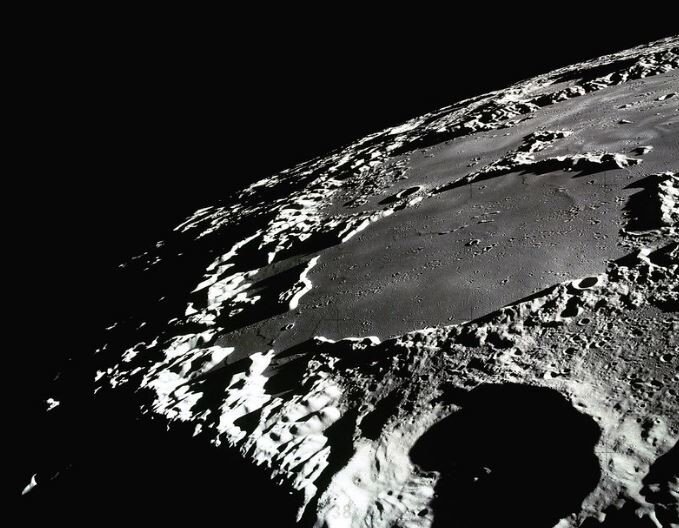
As the Earth rotates, it tilts on its axis bringing some parts of the planet closer to the sun than others — which is why we have seasons. But on the Moon, the lack of tilt means there are some regions that are never exposed to sunlight at all. And within these dark areas are impact craters which could hold the key to future lunar missions.
Some of these craters are believed to hold frozen water, according to observations that were reported last year. Based on data from the planet Mercury, which also has a large number of impact craters and spins in such a way that the sun never touches parts of its surface, researchers found that some craters stayed perpetually in shadow and were up to 10% shallower on the sides nearest to the poles. That suggests that the craters could contain ice that is not exposed to sunlight on the pole-facing side.
Further research into this topic found that the ice in lunar craters could be up to 3 billion years old. By looking at the pattern of ice deposits within craters, researchers were able to determine clues about their age.
Now, researchers are focusing on what chemicals other than water could be contained within lunar craters. When the moon is impacted by comets containing water, carbon dioxide, and methane, the lack of atmosphere means most of these chemicals evaporate into space. But some chemicals with low boiling points, called volatiles, could end up frozen and trapped in craters for billions of years.
To understand whether volatiles are likely to be found on the moon, planetary scientist Dana Hurley and colleagues looked at how much carbon dioxide could be captured by lunar craters. She found that between 15 and 20% of carbon dioxide released on the moon would end up being trapped on the surface, which is more than previous estimations had predicted.
That’s good news for potential manned lunar missions, as it means it’s more likely that the moon hosts resources which could be used for human consumption or for generating fuel. “Understanding the inventory of volatiles and these cold traps is really good for being a potential resource,” Hurley said, as reported by phys.org. “Just knowing exactly how small the area was where it was that cold, it’s really interesting that you can get that much carbon dioxide delivered there.”
The work was presented at the American Geophysical Union’s Fall Meeting in San Fransisco, California last week.
Editors' Recommendations
- Saturn’s moon Titan could be the perfect place to host life
- Saturn’s moon Titan could have the ingredients for life
- See the surface of Jupiter’s icy moon Europa in unprecedented detail
- NASA wants your help designing a mini payload for moon exploration
- See Mars’ Moreux crater in new images from Mars Express


